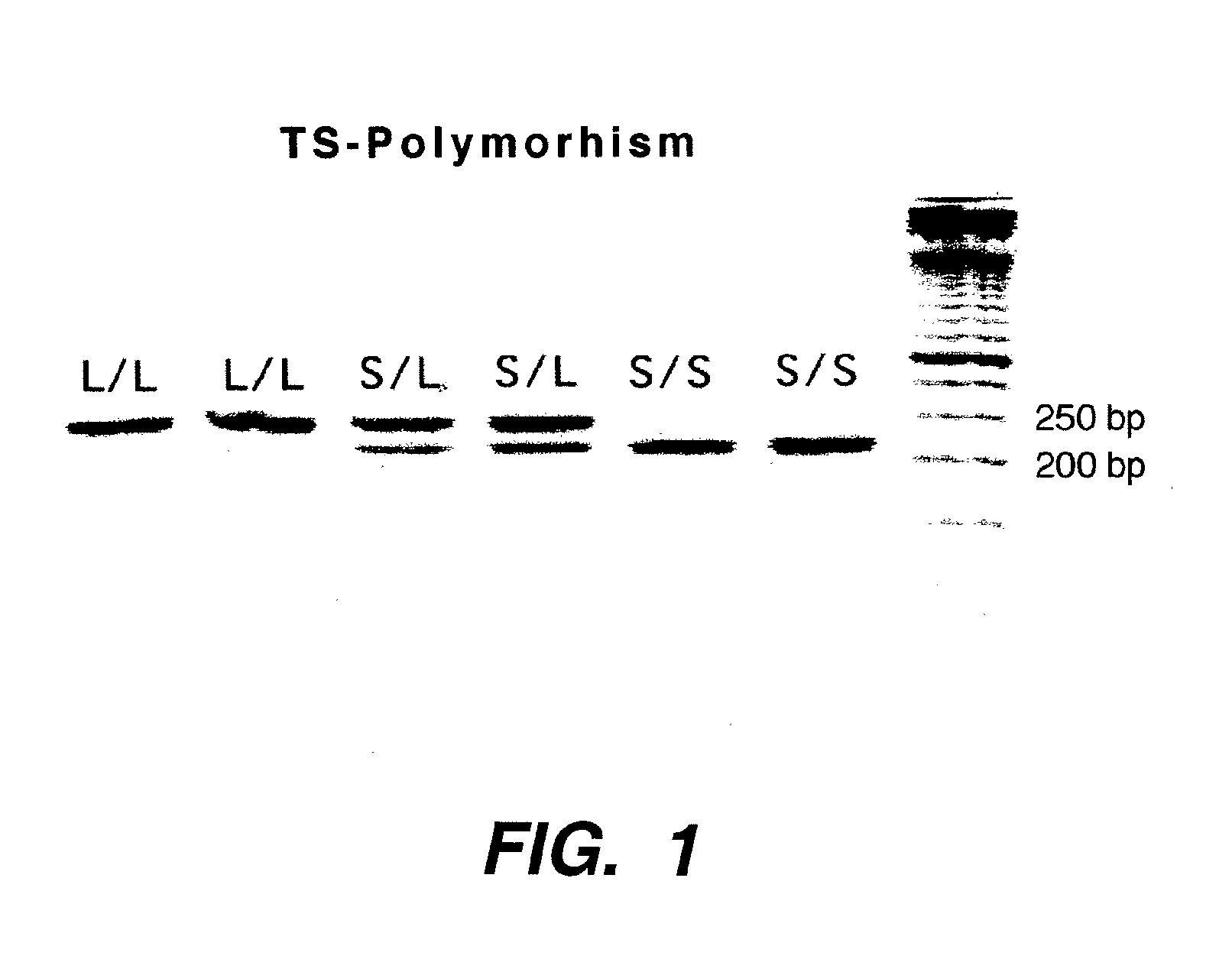Genomic polymorphism for predicting therapeutic response
a gene polymorphism and therapeutic technology, applied in the field of genetic polymorphism to treat diseases, can solve the problems of significant inter-individual variation in response and toxicities of cancer chemotherapy
- Summary
- Abstract
- Description
- Claims
- Application Information
AI Technical Summary
Problems solved by technology
Method used
Image
Examples
examples
[0046]Data from 58 patients with colorectal cancer with known TS gene expression level was obtained. This data demonstrates a significant correlation between TS polymorphism and intratumoral TS gene expression. This observation is the first time that a genomic polymorphism has been found to associated with intratumoral gene expression levels. In the case of TS this may have a significant impact on patient management, regarding selection of drug and dosing of drug. Patients with triple repeat in the TS gene as expected from in vitro models had higher gene expression levels in their tumors compared to patients with double repeat (p=0.003). 16 patients with the triple repeat had a median TS gene expression of 7.15, 10 patients with the double repeat had a median TS gene expression of 4.04 and 29 patients with heterozygosity (one triple and one double) had a median TS gene expression of 2.38.
[0047]These results can be summarized as follows (as used herein, S will refer to a short (doubl...
PUM
| Property | Measurement | Unit |
|---|---|---|
| electrophoresis | aaaaa | aaaaa |
| nucleic acid | aaaaa | aaaaa |
| polymorphic | aaaaa | aaaaa |
Abstract
Description
Claims
Application Information
 Login to View More
Login to View More - R&D
- Intellectual Property
- Life Sciences
- Materials
- Tech Scout
- Unparalleled Data Quality
- Higher Quality Content
- 60% Fewer Hallucinations
Browse by: Latest US Patents, China's latest patents, Technical Efficacy Thesaurus, Application Domain, Technology Topic, Popular Technical Reports.
© 2025 PatSnap. All rights reserved.Legal|Privacy policy|Modern Slavery Act Transparency Statement|Sitemap|About US| Contact US: help@patsnap.com

